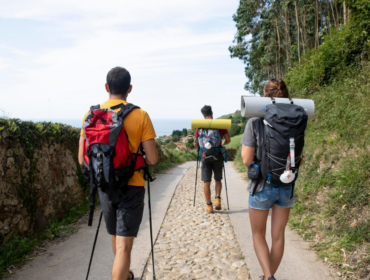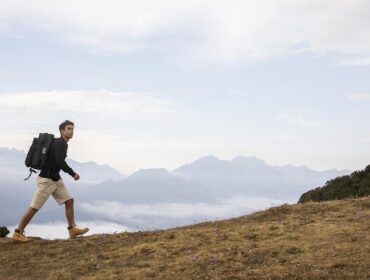Saguaro National Park in southern Arizona is one of the numerous parks designated in the 1990s to protect the land from overdevelopment and mining. Previously declared a National Monument in 1933 and then again in 1964, Saguaro National Park is a haven for the Saguaro Cactus and hundreds of animal and plant species. With both desert and mountain landscapes, the park has something for everyone and will surprise many visitors with its diversity and beauty. With its proximity to Phoenix (two hours) or Tucson (30 minutes), this park is easily accessible and family-friendly.
What to Know Before You Go
The most surprising thing about the park is it’s broken up into two distinct and unique parts. The west side — or Tucson Mountain District — is what you likely picture when you think of Saguaro National Park. It’s all desert and home to thousands of cacti. It’s also relatively undeveloped with few hiking trails. However, it’s the best place to be for sunset — the sunsets in Tucson are some of the best in the country. There is no entrance station. You can enter/leave at any time of the day or night.
On the east side is the Rincon Mountain District which consists of saguaro cacti and the Rincon Mountain Range. This side offers more hiking trails and even backpacking opportunities in the mountains.
Check out The Ultimate Backpacking Guide for Beginners for tips on how to prepare.
Some visitors are even surprised to learn those mountains receive snow during winter. On this side, the gates with the visitor center usually close at or before sunset. Keep this in mind so you’re not locked in.

Sleeping
When it comes to camping, Saguaro National Park is a bit unique. There are no official car camping accommodations inside of the park. However, there are backpacking opportunities within the Rincon Mountain District (east side). There are only 21 backcountry campsites available at a time. Each permit is $8, and up to six people are allowed at each campsite. I’ve listed the backpacking hikes below under “hard hikes.”
The trails into the Tucson mountains can be brutal as you’re gaining a lot of elevation in a short amount of time. Most of the hikes will start around 2,500 feet and go over 7,000 or 8,000 feet. Please understand the difficulty of this region and the potential of no water access. Always consult a ranger before embarking to make sure you have the latest information. Keep in mind for the backcountry camping that even though you’re in the desert southwest, you could find yourself in winter conditions in the mountains.
As mentioned above, there isn’t designated car camping, but there is dispersed camping close to the park’s eastern side. So, as you head up Reddington Pass, you should find camping options available.
Additionally, on the road up to Mt. Lemmon, there’s a handful of different official campgrounds to choose from. Depending on where you camp, it could be between 20 minutes and an hour of driving. If you’re looking for hotel or RV options, there are plenty in the Tucson area. You won’t go wrong wherever you choose and should be close to either side of the park or the road up to Mt. Lemmon.

Hiking
Hiking in the Saguaro National Park will be different than any other park you’ll ever visit. No other park has the density of cacti that the Arizona National Park has. Due to this, you’ll constantly have to be aware of your surroundings to ensure you don’t get ‘stuck.’
Additionally, understand that you are hiking in the desert no matter the temperature outside. This requires you to use the utmost caution and know how to stay safe. Staying hydrated and using sun protection is the easiest way to be safe. If you plan to visit in the warmer seasons, read this guide before going and try to be inside during the hottest parts of the day.
Easy
East Side:
- Garwood Trail – 3.3 miles, 200 feet of elevation gain
- Loma Verde and Squeeze Pen Loop – 3.7 miles, 160 feet of elevation gain
West Side:
- Wildflower Ridge, Oxbow, and Desperado Loop – 2 miles, 140 feet of elevation gain
- Picture Rocks Wash Trail – 3.5 miles, 200 feet of elevation gain
- Cactus Wren Trail – 3.9 miles, 190 feet of elevation gain
Moderate
East Side:
- Tanque Verde Ridge Trail – 3.3 miles, 925 feet of elevation gain
- Hope Camp Trail – 6.5 miles, 500 feet of elevation gain
- Bridal Wreath Falls Trail – 5.7 miles, 1,100 feet of elevation gain
- Garwood Dam to Douglas Spring Loop – 7.1 miles, 1,100 feet of elevation
West Side:
- Cactus Canyon and Gila Monster Loop via Thunderbird Trail – 6 miles, 700 feet of elevation gain
- Sendero Esperanza Trail – 5 miles, 1,050 feet of elevation gain
Hard
East Side (hikes and backpacking):
- Tanque Verde Ridge Trail (Long) – 20 miles, 5,600 feet of elevation gain
- Cow Head Saddle Trail – 26 miles, 7,600 feet of elevation gain
- Hope Camp Trai to Mica Mountain – 15 miles, 6,200 feet of elevation gain
- Mica Mountain via Douglas Spring and Cow Head Saddle Trail – 25 miles, 6,400 feet of elevation gain
West Side:
- Wasson Peak via Sweetwater Trail – 9.3 miles, 2,100 feet of elevation gain
- King Canyon Trail to Wasson Peak – 6.7 miles, 1,800 feet of elevation gain

Other Activities
If you’re short on time but still want to see the east side of the park, enjoy the 10-mile Cactus Forest Loop Drive. This offers a beautiful array of saguaro, views, and mountains. I’d budget 30 minutes as there are a few pull-offs to get out and take in the scenery.
Outside of that, there aren’t a lot of other activities to do in Saguaro National Park. However, only 40 minutes away is Mt. Lemmon, which offers plenty of other hiking, snowboarding/skiing, and biking opportunities depending on the season.
Best Time to Visit
As it goes for all places in the desert southwest, the best time to visit Saguaro National Park is fall through spring. This will keep you away from the triple-digit temperatures and allow you to spend the entire day outside. In Tucson, the weather will vary between lows in the 30s and highs in the 70s or 80s.
Gear that you should bring to Saguaro National Park
- Moisture Wicking Shirt
- Light Jacket
- Pullover Fleece
- Hiking Pants
- Mid top Hiking Boots or Low top hiking boot
- Wool Socks
- Day Hiking Backpack
- Overnight Backpack
- Hat
If you do end up visiting during hot weather, check out What You Need (and Don’t Need) When Hiking in Hot Weather.

Wildlife
Most visitors here will see the standard desert wildlife such as roadrunners, lizards, Gila monsters, and jackrabbits. None of these are particularly dangerous or pose a problem to humans. However, it’s always best practice to keep your distance from animals, especially those with young ones.
Now, if you hike or backpack up into the higher elevations, you’ll have a chance to see white-tailed deer and the occasional black bear. Make sure to properly store your food and scented items in bear territory to ensure your camp doesn’t have a surprise visitor!
Read How to Protect From Bears While Camping for more information.
Article and Photos by Alec Sills-Trausch
Alec is a photographer, writer, and avid hiker who enjoys pushing the limits to find incredible destinations. He hopes through his work to inspire others to get outside and to respect planet earth so future generations can enjoy it just the same. He’s also a cancer survivor. And, he hopes to use his voice to show that you can have a wonderful life after the treatment.




